When outdoor space is limited to a compact courtyard, every inch matters. Thoughtful design choices can turn even the smallest footprint into a functional and stylish escape that adds daily value to your home life. Whether you’re craving a shaded coffee corner, a burst of greenery, or a private open-air retreat, the right setup makes it possible without feeling cramped. This guide highlights practical small courtyard ideas tailored for urban homes, townhouses, and tight layouts. With the right blend of structure, seating, and vertical interest, your courtyard can shift from forgotten to favorite—proving that size doesn’t limit style or purpose.
Cozy Corner Dining with Built‑In Planters
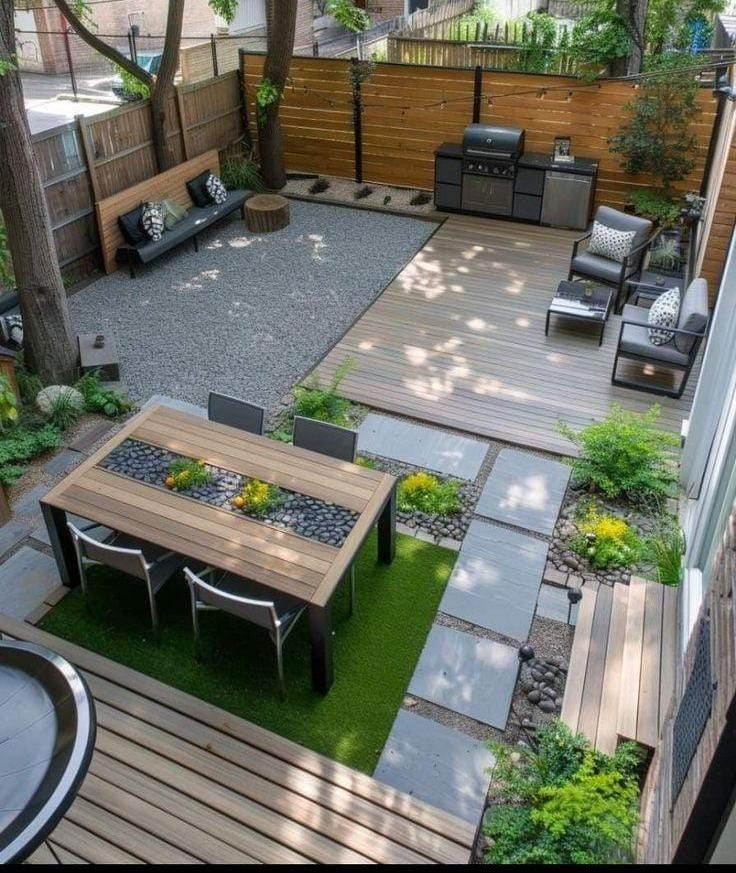
Tucking a dining nook into a courtyard’s underused edge can turn it into a welcoming social zone. Opting for built-in planters as natural dividers offers not only visual softness but also a lush, layered backdrop that subtly defines the space. Whether it’s a raised concrete border doubling as bench seating or timber-clad planters flanking a bistro table, this dual-purpose layout balances function with greenery. Opt for herbs, succulents, or trailing vines that bring a sensory dimension to mealtimes—think aroma and color.
This strategy also supports small-space zoning, offering privacy without enclosing the courtyard. Materials like teak, redwood, or brick can harmonize with existing hardscapes while withstanding outdoor exposure. Integrating lighting under the seat lip or within the planters ensures the area transitions seamlessly into evening use. For added charm, consider weather-resistant cushions in earth-toned or botanical prints to connect with the surrounding garden palette.
Courtyard layouts that make space for dining reinforce daily outdoor living while enhancing property appeal. By anchoring the setup in one corner, circulation remains open, and the compact footprint avoids crowding. The planter-backed dining concept works especially well in narrow courtyards or L-shaped layouts where every inch must be efficient yet inviting.
Evening Uplighting on Vertical Green Walls
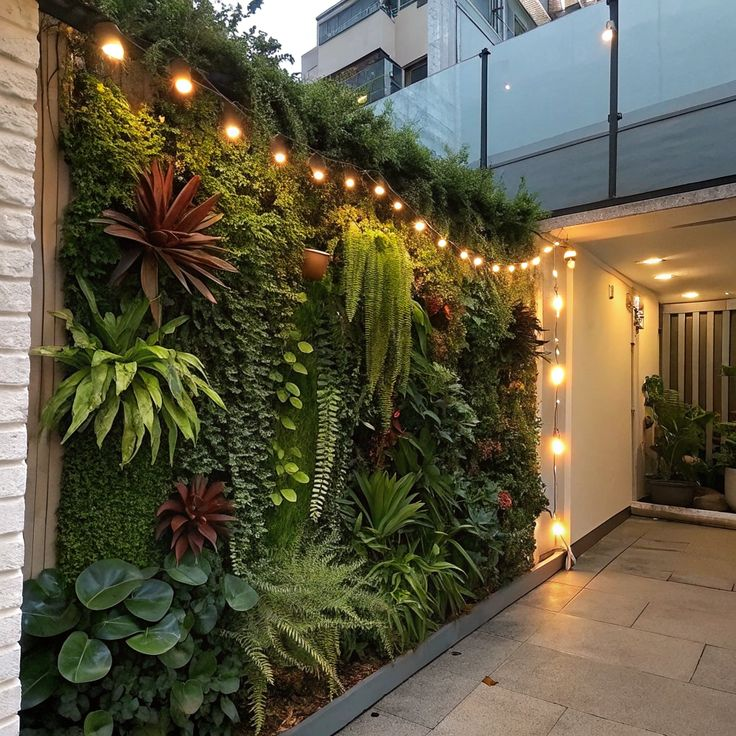
Shadows and highlights can dramatically redefine how greenery is perceived at night. Directing warm uplighting onto vertical garden walls transforms foliage into sculptural elements, enhancing ambiance while improving visibility. Whether the wall supports ivy, fern panels, or modular plant boxes, subtle illumination fosters depth and draws attention to textures and patterns.
Using spike lights or recessed floor LEDs aimed upward ensures plants remain the hero without overwhelming the scene. Position fixtures to avoid glare or leaf burn—this typically means placing them a foot or two away from the wall’s base and angling the beam across rather than straight up. Choose warmer bulbs (2700K–3000K) for a cozy tone or cooler ones for a more contemporary edge.
In small courtyards where wall real estate is often the main planting canvas, this method highlights vertical greenery without taking up precious floor space. It also aids in security by softly lighting the perimeter without harsh overhead fixtures. Smart lighting timers or solar-powered options provide efficient energy use. Whether layered on a trellis, wire grid, or custom green wall, the interplay between light and shadow adds dimension that elevates the space from basic to atmospheric after sundown.
Driftwood Mirror Feature for Space Illusion

Mirrors cleverly expand the visual scale of compact courtyards when framed in tactile, organic elements like driftwood. Beyond reflecting light and greenery, they blur boundaries by mimicking open pathways or doubling the appearance of planting zones. This natural material introduces warmth and texture while maintaining a rustic, curated aesthetic.
Position mirrors across from leafy features or vertical climbers for maximum illusion. When sunlight hits the glass, it enhances brightness without the harshness of artificial light. Be sure to angle mirrors slightly downward to avoid reflecting harsh rays into seating zones or windows. Reclaimed driftwood frames also align with sustainable garden design and age gracefully in outdoor environments.
Choose shatterproof or outdoor-rated glass for safety, and avoid placing mirrors where birds might mistake them for open sky. The irregular lines and grain of the driftwood contrast beautifully against modern courtyard walls, especially in stucco, brick, or concrete finishes. Whether round, arched, or rectangular, these mirrors serve as sculptural features by day and magical reflectors by night. In tight courtyard corners, they can even serve as faux portals, giving depth where walls would otherwise halt the eye. It’s an understated solution with a strong design payoff.

Texture layering underfoot can define walking zones and visual interest without overwhelming small footprints. Pairing rustic terracotta or patterned encaustic tiles with gravel infill introduces a tactile experience and provides permeability for rainwater. This mix softens hard edges and blends structure with organic flow.
To ensure stability, lay a compacted gravel base with defined borders before positioning tiles. Square or hexagonal tiles work well in grids or stepping-stone arrangements, with crushed granite or pea gravel offering a contrasting fill. This setup suits Mediterranean, desert, or cottage-style courtyards, balancing practicality with artistry. Use edging strips or timber sleepers to prevent gravel spread and maintain pattern definition over time.
Color plays a key role—earth-toned tiles in clay reds, mustard yellows, or deep cobalt echo the landscape, while pale gravel lightens and opens up shaded areas. Mixed paving is particularly helpful for segmenting a courtyard into lounge, dining, or garden sections without bulky dividers. The gentle crunch underfoot adds sound texture, enriching the sensory appeal. Over time, this blend of natural wear and imperfection enhances the courtyard’s lived-in charm, making it feel both purposeful and timeless. Maintenance remains minimal, with occasional weeding and gravel top-ups preserving the overall look.
Slatted Bench Seating Under Tree Canopy
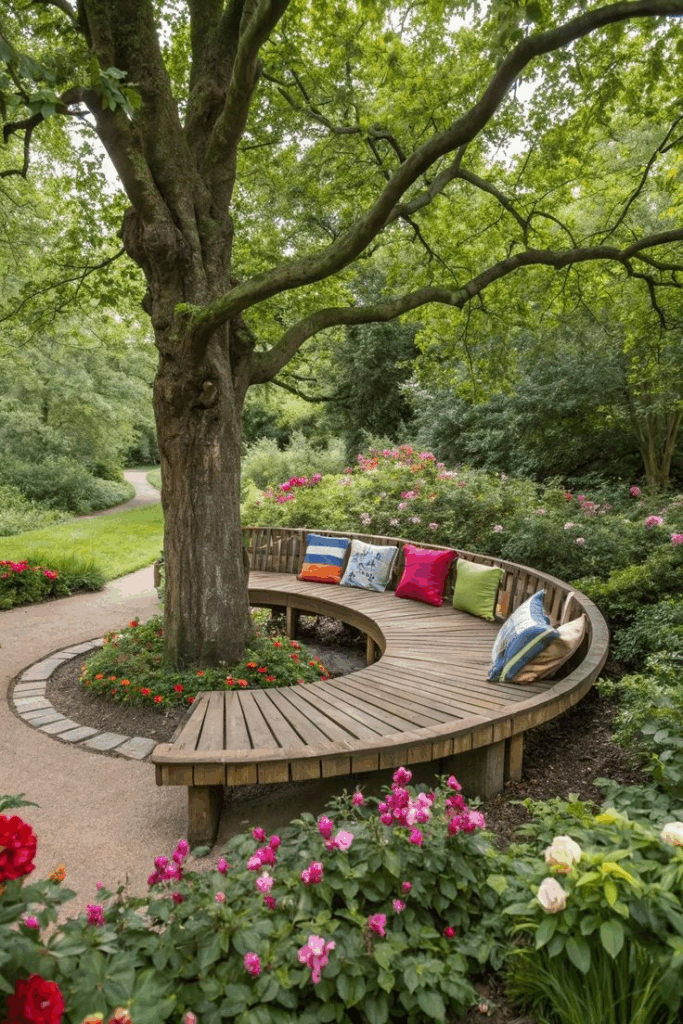
Locating seating beneath a tree’s dappled shade delivers respite and elegance. Opting for slatted benches—whether in cedar, teak, or powder-coated aluminum—ensures breathability, durability, and a clean-lined aesthetic. When nestled beneath a canopy, these benches act as both retreat and viewing perch for the surrounding courtyard elements.
A curved layout around the tree base or a straight run parallel to a path offers functional variety. Ensure proper root protection by using adjustable legs or shallow foundations to avoid compaction. Integrate hidden storage under the seat or incorporate built-in planters on either end for added utility. Weather-resistant cushions or throws in subtle tones bring softness without detracting from the natural setting.
The rhythmic shadow play from slatted surfaces enhances the sense of lightness, especially when morning or evening sun filters through leaves. As a bonus, fallen petals or leaves are easily brushed away from the open slats. Consider uplighting the tree at night for a soft glow that turns this bench into a contemplative escape even after dusk. This simple yet thoughtful design solution invites pause, adds architectural rhythm, and strengthens the relationship between built and natural elements in small courtyard layouts.
Wall‑Mounted Herb Pots at Doorway
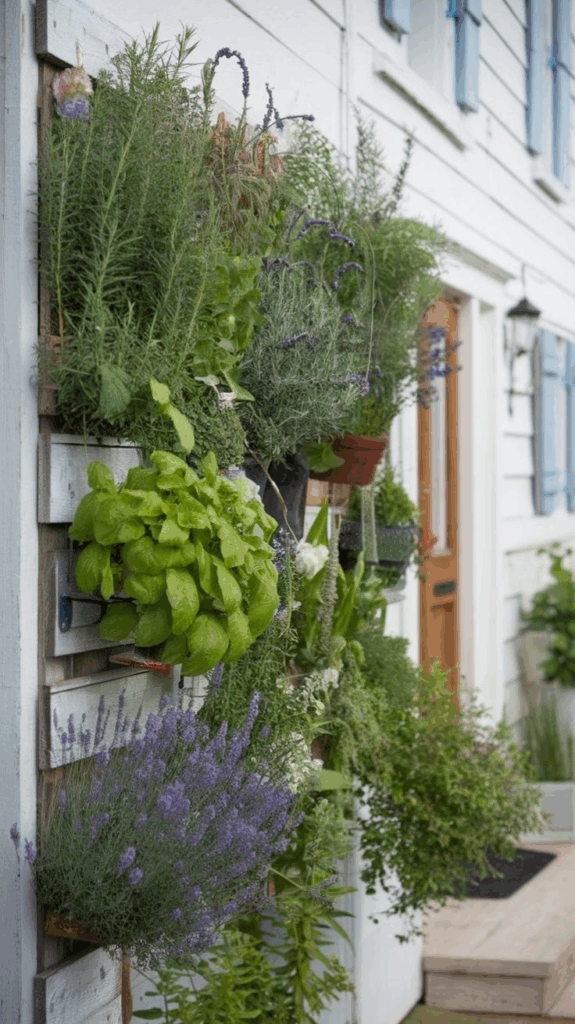
Positioning herb pots near a courtyard entrance offers both functional and visual advantages. Placed within arm’s reach, these vertical clusters of greenery provide fresh ingredients while softening transition zones between indoors and out. Wall-mounting techniques save floor space and keep the layout open—ideal for narrow courtyards or shared apartment gardens.
Use terracotta, galvanized metal, or ceramic pots affixed to a lattice frame, wooden board, or individual hooks. Ensure the wall receives sufficient sunlight for Mediterranean herbs like rosemary, thyme, or basil. Incorporate a drip tray system or angled mounts to manage runoff and avoid wall stains. The modular nature of this setup allows for seasonal rotation or aesthetic tweaking as needed.
Group pots by culinary use or leaf shape for ease and interest—basil, mint, parsley, and oregano offer contrasting textures and rich scents. This accessible greenery also introduces a sense of abundance right where guests arrive or leave. Pair the feature with a nearby bistro chair or lantern sconce to invite pause. In courtyards where gardening ground is limited, vertical herb arrangements supply form, function, and aroma with minimal maintenance. It’s a lifestyle upgrade wrapped in simple design.
Pocket Water Feature as Sound and Focal Point
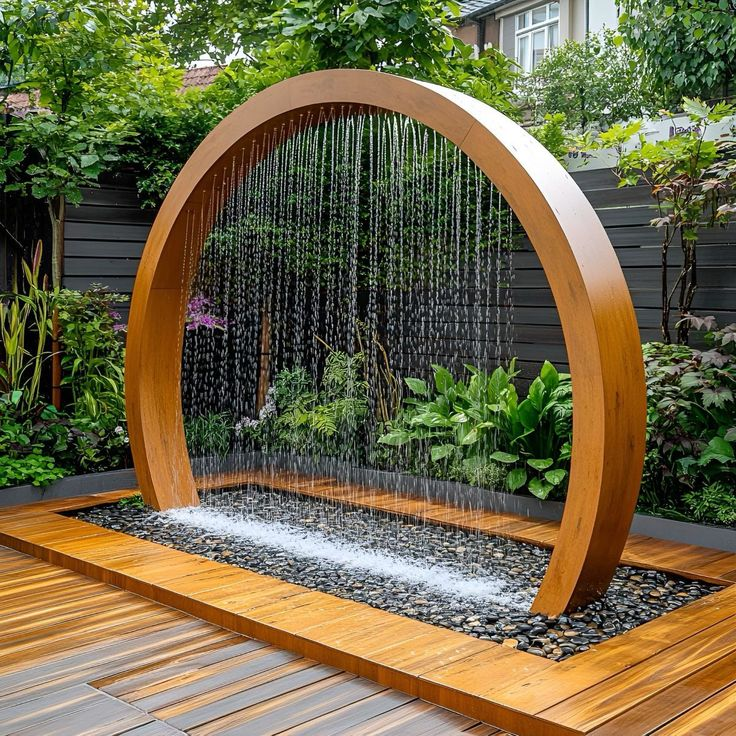
Soothing water elements need not dominate a space to be effective. A compact water feature nestled in a courtyard corner can serve as both auditory balm and visual centerpiece. Whether a ceramic basin, stone urn, or steel trough with a hidden pump, this setup invites calm while masking urban noise.
Select a design proportionate to the surrounding elements—no larger than a coffee table in most compact courtyards. Integrate pebbles, lily pads, or floating candles for additional interest. Choose a recirculating system that minimizes splash and allows for solar power integration, especially in sunlit layouts.
The sound of gentle trickling or bubbling enhances tranquility and promotes sensory engagement, drawing people in without requiring much upkeep. Surround the feature with small-scale foliage—think hostas, dwarf papyrus, or ferns—to frame it naturally. When paired with a reflective surface, like a mirror or glossy tiles, even a shallow basin can double its presence.
In tight urban settings, the presence of moving water introduces a dynamic quality otherwise hard to achieve. It’s a compact design element that refreshes the atmosphere, improves microclimate, and makes the courtyard feel complete and intentional without sacrificing valuable ground space.
Boho String Lights with Climbing Vines
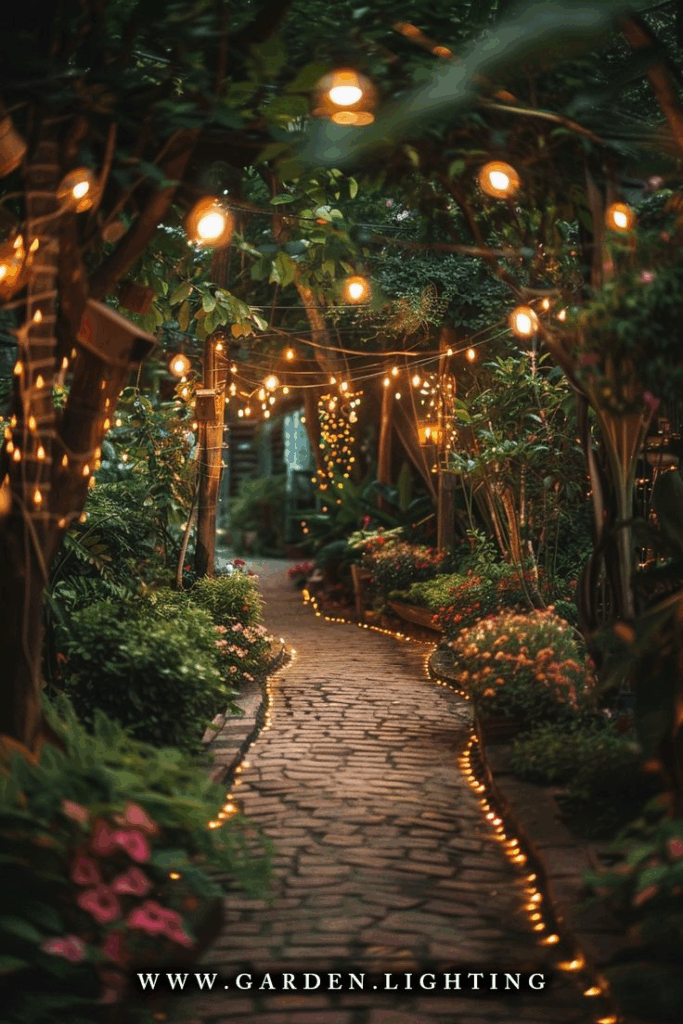
Woven lighting across a courtyard can transform it into an enchanting retreat once the sun dips. Drape boho-style string lights overhead or diagonally across fence lines and trellises, allowing climbing vines like jasmine, passionflower, or clematis to intertwine with the wires. The result is a glowing canopy that adds softness and warmth.
Use weather-resistant LED bulbs with vintage or globe shapes for visual character. Secure light strands with discreet hooks or tension wires anchored to nearby walls, pergolas, or trees. Spacing them around 10–12 inches apart creates balanced illumination while allowing the vines room to grow. The visual blend of foliage and bulbs creates a floating effect—organic yet structured.
Warm white tones (2700K–3000K) keep the atmosphere inviting, especially when reflected off pale surfaces like stucco or gravel. To ensure safety, use outdoor-grade extension cords and weatherproof sockets. During the day, the leafy tendrils provide a green overhead structure; at night, the soft glow amplifies intimacy.
In courtyards lacking built-in fixtures or overhead coverage, this vine-and-light solution delivers ambiance with minimal construction. It’s an affordable and flexible decor choice that feels curated, whimsical, and suited for lounging or entertaining under the stars.
Fold‑Out Bistro Table for Flexibility
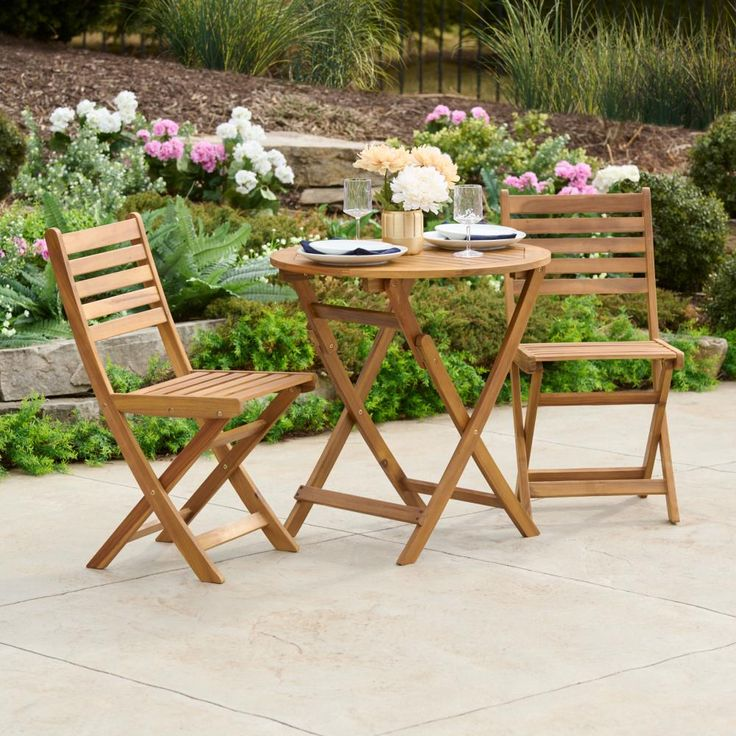
Adaptability becomes essential in small courtyard design, especially when balancing relaxation with function. Installing a wall-mounted fold-out bistro table introduces convenience without permanent bulk. When open, it creates space for casual meals or laptop sessions; when folded, it tucks neatly away, restoring the area’s open flow.
Look for models in powder-coated steel, FSC-certified wood, or composite finishes that withstand outdoor exposure. Position it at standard dining height—around 28 to 30 inches—and ensure the wall is structurally sound enough to bear weight. Pair the table with folding or stackable chairs for complete flexibility. Even adding a narrow bench below allows for easy stow-and-go use.
Consider painting the wall behind the table a contrasting hue or hanging a decorative board to frame the fold-out zone when not in use. Add potted herbs, a candleholder, or mini lanterns nearby to keep the setup inviting and multipurpose. Whether sipping coffee, dining for two, or enjoying solo reading time, this compact addition enhances how the courtyard is used throughout the day.
By giving users full control over when and how the space is activated, the fold-out bistro table ensures utility doesn’t overshadow charm—ideal for renters, city dwellers, or minimalists seeking clean, smart design.
Compact Pergola with Retractable Shade
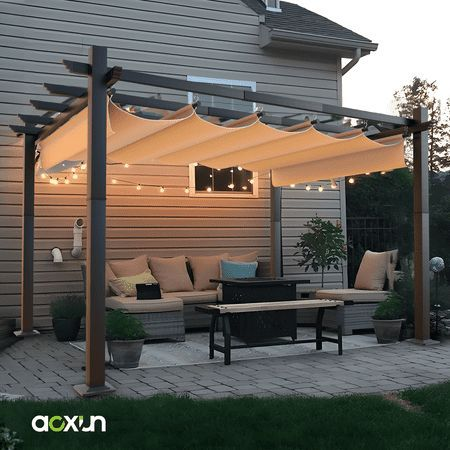
Smart use of overhead coverage can dramatically shift how a courtyard performs across seasons. Installing a slim-profile pergola fitted with a retractable shade offers sun control, weather resistance, and architectural structure—all without overwhelming the space. This solution fits neatly into compact footprints and brings a versatile outdoor room effect.
Materials like powder-coated aluminum, cedar, or engineered wood provide durability with aesthetic appeal. Opt for manual or motorized shade canopies made from UV-resistant fabric in neutral tones that complement nearby surfaces. The retractable design allows users to open the space fully during cooler months or pull it across for midday shade and protection from rain.
Integrate side planters, climbing vines, or hanging lanterns to soften the frame while enhancing vertical interest. Underneath, position lightweight furniture—think acacia loungers or a café table—to keep the footprint light and movable. For nighttime use, string warm LED strip lighting along the cross beams to outline the silhouette without overpowering.
A well-proportioned pergola acts as a functional anchor in the courtyard layout, helping define dining or lounge zones. Its ability to adapt based on light and weather makes it indispensable in regions with changing seasons, maximizing outdoor time without adding bulk or complexity.
Peek‑Through Planting Channels to Open Boundaries
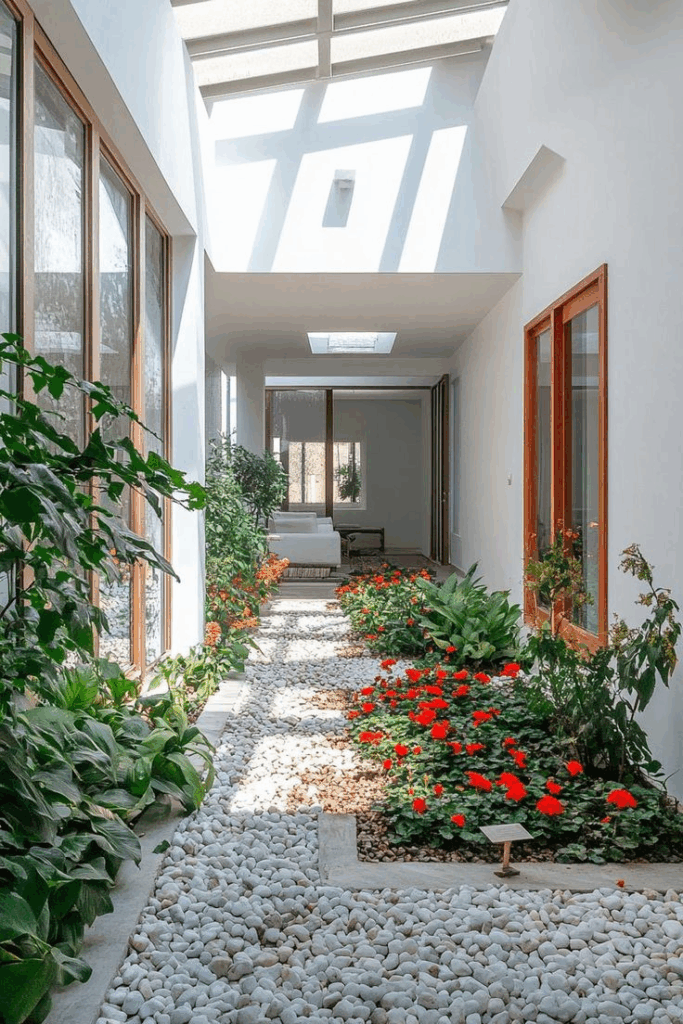
Visual transparency can transform enclosed courtyards into breathable, open-feeling spaces. Integrating peek-through planting channels—narrow, alternating openings filled with greenery—softens boundary walls while maintaining privacy. This technique breaks up solid fencing or hardscape with rhythmic intervals of green, drawing the eye beyond the wall line.
Install vertical slats, breeze blocks, or low-maintenance wire panels in spaced sequences, then fill each with compact climbers or cascading plants. Varieties like trailing rosemary, creeping fig, or ornamental grasses work well due to their controlled spread and textured appearance. Use staggered heights and depth variations to keep the rhythm organic, not rigid.
Beyond visual interest, these channels allow airflow and filtered light, which is particularly beneficial in humid or shady courtyards. They also reduce heat buildup on south- or west-facing walls. Lighting each gap from below can amplify shadows and highlight foliage at night for an added ambient effect.
Rather than feeling boxed in, the courtyard begins to breathe, extending sightlines without sacrificing the enclosed comfort many users desire. It’s a strategic method for expanding perceived space, introducing nature where there’s limited planting ground, and giving walls more than just structural function—they become part of the experience.
Vertical Climber Ladders for Color & Privacy
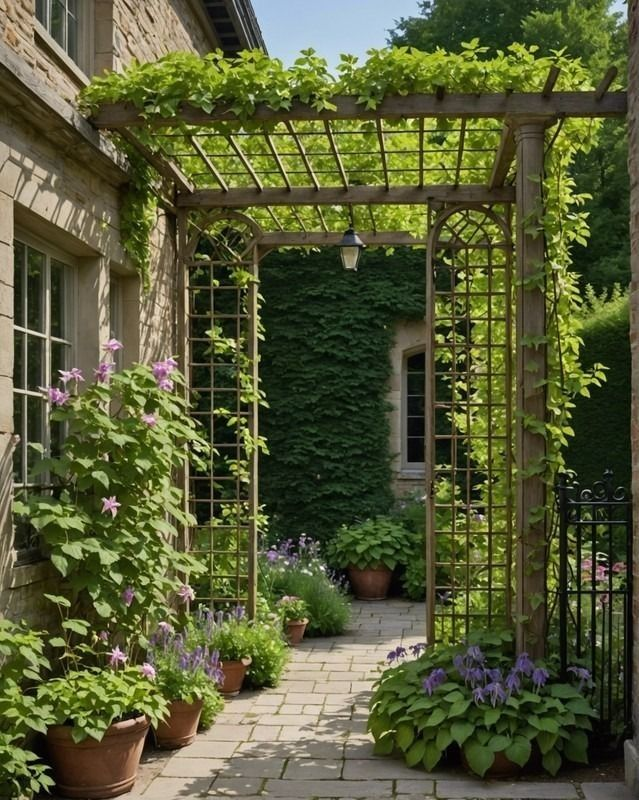
Bringing greenery upward allows courtyards to feel lush without cluttering limited ground area. Vertical ladder structures, crafted from weatherproof wood or powder-coated metal, offer a space-savvy way to grow climbers that enhance both color and seclusion. They lean against walls, slot into narrow beds, or anchor into large planter boxes.
Use flowering or evergreen climbers like bougainvillea, mandevilla, star jasmine, or clematis to bring seasonal vibrance. These plants not only decorate but also help screen views, reducing exposure from neighboring buildings or windows. Arrange multiple ladders side-by-side to build a partial living wall, or stagger them for a layered effect.
Secure anchoring is essential to withstand wind or plant weight, especially once fully grown. Drip irrigation systems or self-watering planters help reduce maintenance while keeping roots hydrated. Adding solar-powered lights near each ladder base can highlight blooms and structure after dark.
This method introduces vertical zoning to flat courtyards, adding privacy, texture, and botanical variety. It’s a modular, renter-friendly tactic that suits modern, boho, or rustic themes. When used as flexible dividers between dining and lounging zones, vertical climber ladders become both functional and decorative without overcomplicating the layout.
Zen Gravel & Boulder Minimalist Layout
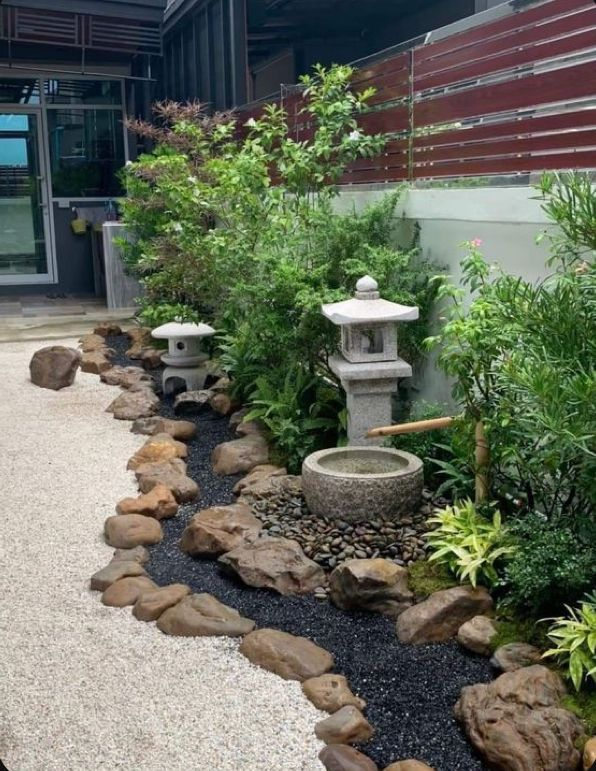
Simplicity often speaks loudest in courtyard design. A Zen-inspired layout built around raked gravel, sparse boulders, and select plantings invites quiet reflection and low-maintenance elegance. This style draws from Japanese rock garden principles, focusing on asymmetry, balance, and negative space.
Use crushed granite or fine gravel in muted tones—beige, gray, or charcoal—as the base. Frame the area with natural stone borders or timber edging. Add one or two large boulders, ideally with organic, weathered shapes. These act as focal points and can symbolically represent islands or mountains within the design narrative.
Intersperse the gravel with tufts of dwarf mondo grass, low sedge, or black pine for texture and seasonal softness. Avoid over-planting—restraint is key. The space becomes a calming backdrop rather than a showpiece. Rake subtle ripple or linear patterns around the stones to emphasize tranquility and motion.
This approach is particularly effective in shaded or urban courtyards where water-hungry plants or furniture may not thrive. A minimalist layout using natural materials also reduces upkeep and aligns with sustainable practices. When paired with a bench or meditation spot, the result is an intentional, grounded escape that feels deeply integrated with its purpose and surroundings.
Movable Planter Stage for Seasonal Styling
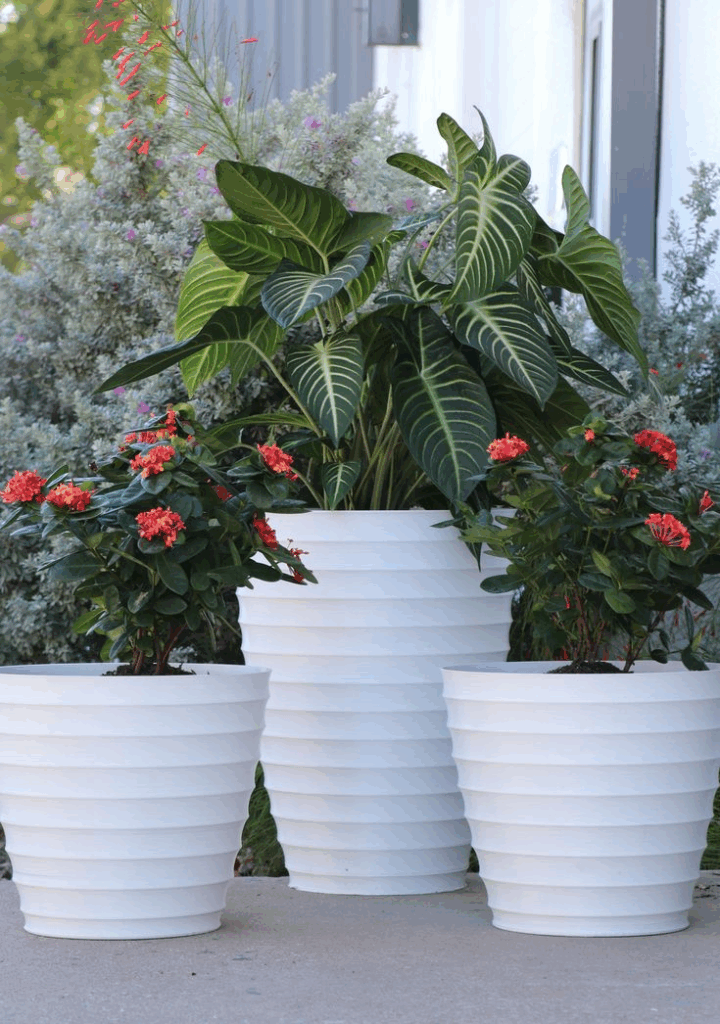
Flexibility in planting arrangements can keep a courtyard feeling fresh and seasonally relevant. A movable planter stage—essentially a raised platform on wheels—enables you to rotate greenery, adjust sunlight exposure, or transform focal areas without committing to permanent changes. It’s especially practical for renters, entertainers, or avid plant lovers experimenting with layout shifts.
Construct the stage using pressure-treated wood, metal grating, or composite decking panels atop caster wheels. Ensure it’s stable enough to bear the weight of soil-filled containers. Group plants with similar needs—sun-loving succulents, flowering annuals, or edible greens—on each platform so you can move entire plant families as light or climate shifts.
Wheeled bases also allow for easy cleaning and rearrangement before events or during weather transitions. A central stage could host a seasonal display—mums in fall, poinsettias in winter, or colorful impatiens in spring. Add layered heights using tiered stands or inverted pots to build vertical dimension.
This mobile element keeps the courtyard dynamic without disrupting the overall flow. When parked beside a dining zone, it acts as a lush screen; near a seating nook, it becomes a soft border. It’s an inventive solution that injects movement, personality, and adaptability into compact outdoor living spaces.
Fully‑Potted Courtyard Garden for Renters
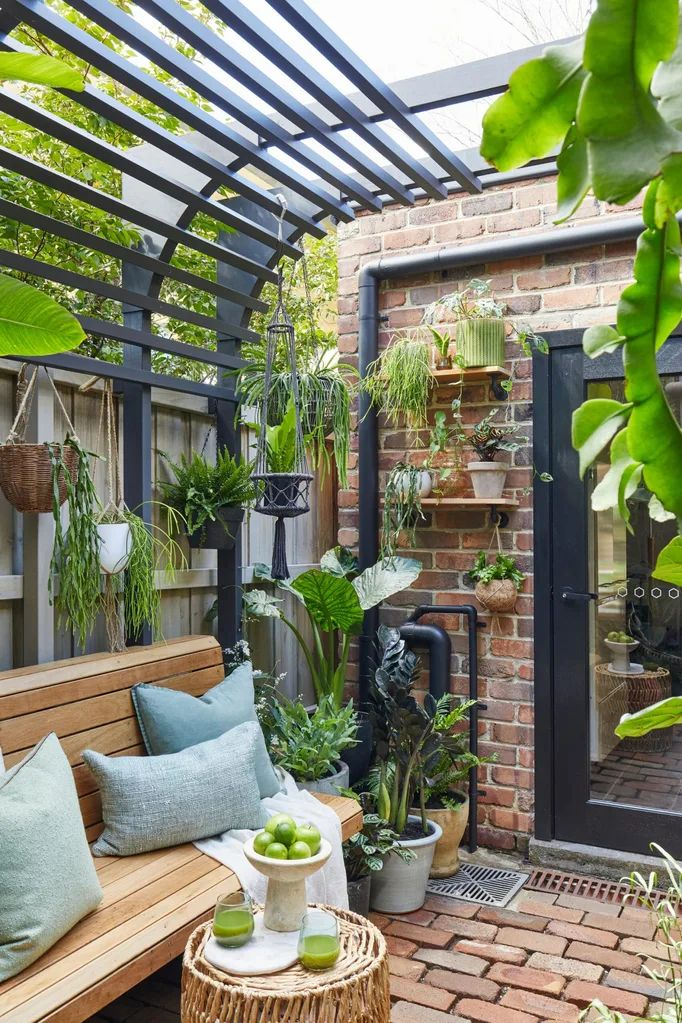
Permanent landscaping isn’t always an option for renters, but an entirely potted courtyard garden offers versatility without sacrifice. Container-only layouts allow for lush planting, style curation, and total portability when lease terms change. Pots can vary in size, material, and height to mimic the layering found in built-in gardens.
Choose lightweight fiberglass, resin, or ceramic containers that balance aesthetics with mobility. Groupings of three or five pots in different heights and widths create depth and visual rhythm. Select evergreen anchors—like boxwood or dwarf olive—alongside rotating blooms such as geraniums, violas, or nasturtiums for seasonal variation. Edibles like lettuce, cherry tomatoes, or herbs also thrive in confined soil environments.
Pots with built-in drainage and saucers protect flooring while minimizing upkeep. Place taller pots at the back edges or corners to define space without crowding. Intermix low bowls for ground coverage and slender planters for tight wall-side gaps.
This method supports full garden enjoyment with zero structural change—perfect for balconies, inner-city yards, or temporary housing. With smart placement and occasional rearrangement, the potted courtyard can evolve throughout the year. It provides the freedom to adapt and personalize, all while turning a blank space into a vibrant, livable outdoor extension.
